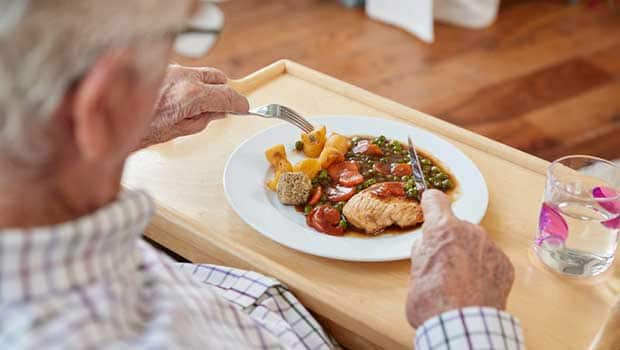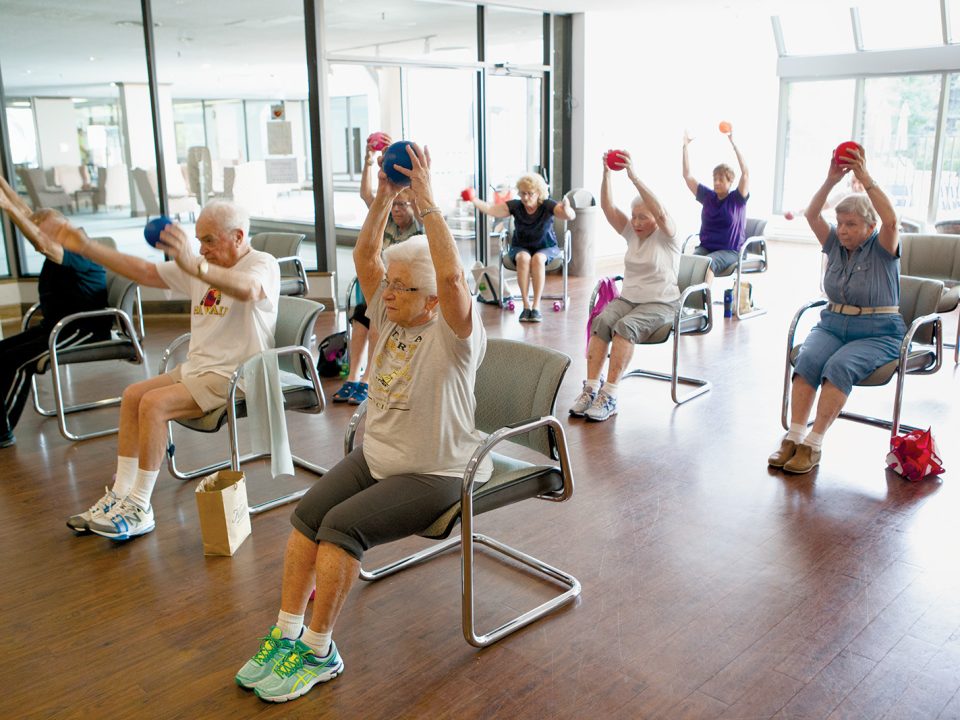
WHO releases first guideline on digital health interventions
April 26, 2019
Should There Always Be A Nurse On Duty And Present In Nursing Homes?
May 19, 2019Activities for people with dementia based around food

Activities for people with dementia based around food
The sight of fruit attractively presented on a platter, the smell of freshly brewed coffee, the crunch of toast: all these are examples of how food can stimulate our senses. For people with dementia – especially those who may be losing interest in food and participating in mealtimes – an activity that focuses on stimulating the senses could provide the key to encouraging them to eat or being able to enjoy food again. For some, an activity that encourages sharing of memories related to food may be a powerful and positive experience. For others, it may be that simply being given the job of laying the table makes them feel more involved with – and positive about – the mealtime experience.
The smell of food – such as freshly baked bread – is a powerful way of stimulating appetites and conversation.
This feature describes activities that all involve food or mealtimes in one way or another. As well as stimulating appetites, these activities are also good ways to work alongside and start conversations with people with dementia. For other ideas related to this, see the feature Activity as part of the whole day in the Keeping active and occupied section.
Dementia and its effect on interest in food
Over time a person with dementia may find that their appetite declines or food doesn’t taste quite like it did before. Sensory changes such as sight difficulties and a decline in the ability to smell and taste food can impact on the person’s ability to enjoy food and mealtimes. As a result their interest in food and eating can decline. Communication difficulties may make it hard for a person to say what they want or find difficult about mealtimes.
Supporting involvement in food preparation
Many people will have spent a lot of time over the years either preparing or working with food. Offering opportunities to continue this can help give a sense of purpose and usefulness, boosting confidence and self-esteem, as well as promoting an interest in food and mealtimes.
The extent to which someone can be involved in food preparation will depend very much on their abilities. It is important to ensure the activity is manageable and suitable for the skill of the person involved.
Some ideas to consider include:
Help to prepare a fruit salad
This is a great way of stimulating the senses and can involve a number of stages: choosing the fruit, washing the fruit, and peeling the fruit. Encourage people to smell and touch the fruit and to talk about its smell and flavour. Introduce unusual exotic fruits and talk about where the fruit comes from in the world. What fruit did the person eat when they were younger? Allow people to taste the fruit and encourage them to spoon the fruit salad into bowls for themselves and/or others.
Make sandwiches
This is a good thing to try and again can involve several stages: buttering the bread, adding sandwich fillings and placing the sandwiches on a platter or plates.
Wash and peel vegetables
Use a simple vegetable peeler to peel carrots and potatoes, for example.
Ice and decorate cupcakes, biscuits or Easter eggs
Pre-made icing is available to buy in easy-to-use squeezy tubes in a variety of colours.
Link the activity to a theme or an event such as Easter, Christmas, Halloween or bonfire night.
Cooking at home
A person with dementia living at home may still want to be involved in cooking or preparing food, even if some of their skills have declined. You can help a person to continue this activity or encourage them to participate in simple tasks such as:
- stir custard, baked beans or soup in a pan
- add extras such as jam to rice pudding
- pour gravy on to their meal
- cut bread or toast into finger pieces to dip into soup or to be served with a boiled egg.
Some people may be happy just to look on. Still, encourage interest by talking about what you’re doing, the smells and the look of the food as it is being prepared.
Involvement in mealtime tasks
Encouraging a person with dementia to be involved with the various jobs associated with putting on a meal – laying the table, for example – can help them to retain skills and also boost their confidence. Laying the table may involve putting out items such as knives and forks, place mats, condiments or folding napkins. After the meal, other tasks follow: clearing away plates and crockery, washing up, drying pots and pans, and putting them away. A person with dementia may enjoy participating in any one or all of these tasks.
Encourage people to make their own drinks or assist others to make theirs. Some simply may enjoy one aspect of this, such as putting the sugar into a cup or the teabags into a teapot.
Mealtimes as sociable events
In a group setting, host themed events where the food is specific to the event or time of year. For example, Wimbledon may be an opportunity to tempt people to eat strawberries and cream while watching a tennis match on television. Some care homes may own a Wii fit system which enables all people to take part in a virtual tennis match as participants or spectators, so the whole event has relevance and can be great fun.
Themed events based on a particular country or culture can be lots of fun. In a group setting, residents can have the chance to try foods from another resident’s or a staff member’s culture or tradition. It doesn’t have to end there – set the scene and create an atmosphere to go along with the food. For example, a Spanish night may be based around a tapas way of eating, and everyone could get dressed up in items of dress such as sombreros. Put up Spanish pictures or photographs around the dining area and if possible organise Spanish entertainment, say a Spanish guitar player! Invite families and friends to share in the meal. A relaxed sociable atmosphere can make food fun and enjoyable.
Life story and food
Find out about a person’s connection to food and mealtimes from their life experience. This is a valuable way to encourage conversations around food and stimulate interest in mealtimes. Perhaps a person remembers food rationing in wartime. Old recipe books are an excellent prompt to talking about the kind of food people would have eaten or seen prepared when they were younger. Perhaps the person has fond or unpleasant memories of school meals which in itself can draw out preferences for food and eating.
Here are some other suggestions for activities:
- Hold a fish and chip night – even eat the meal out of the paper! This can encourage people to share memories of seaside holidays in years gone by.
- Find pictures or photographs of the old-fashioned sweets in bottles, for example bull’s eyes, sherbets and pear drops. Buy a selection of old-style sweets and offer people a chance to smell and taste sweets from the past. Perhaps even arrange a trip to an old-fashioned sweet shop!
Activities and conversation based around a person’s memories and life experience can be one way that we learn more about the people we are working with, including their food preferences. If a person is struggling with a poor appetite, this sort of information may help us understand why and is crucial.
Encouraging conversation around food
Food is a great topic for conversation, either in groups or one-to-one. Some examples of conversation-starters could be:
- How do you prefer to drink your tea – from a cup or a mug? Does it have to be a china cup?
- Where did you shop for food?
- What day did you go to the market?
- What food did you buy?
- What is your favourite food or meal? Why?
- What were your favourite sweets as a child?
The smell of food – such as freshly baked bread or freshly brewed coffee – can evoke memories of the past and is a powerful way of stimulating appetites and conversation. Some examples could be ‘Wow, that coffee smells good’ or ‘The smell of freshly baked scones reminds me of my mum baking on a Saturday.’
Food and being outdoors
A trip to a local garden centre can serve two purposes: it gives the chance to enjoy the plants and greenery, as well as an opportunity to enjoy tea and cake. Getting to know the local area could involve a trip to eat out at a local pub or café. Make the most of good weather in the summertime by eating out in the garden or going to the park for a picnic. This can add another dimension to the eating experience.
This article was originally published on www.scie.org.uk in May 2015. Author unkown.










